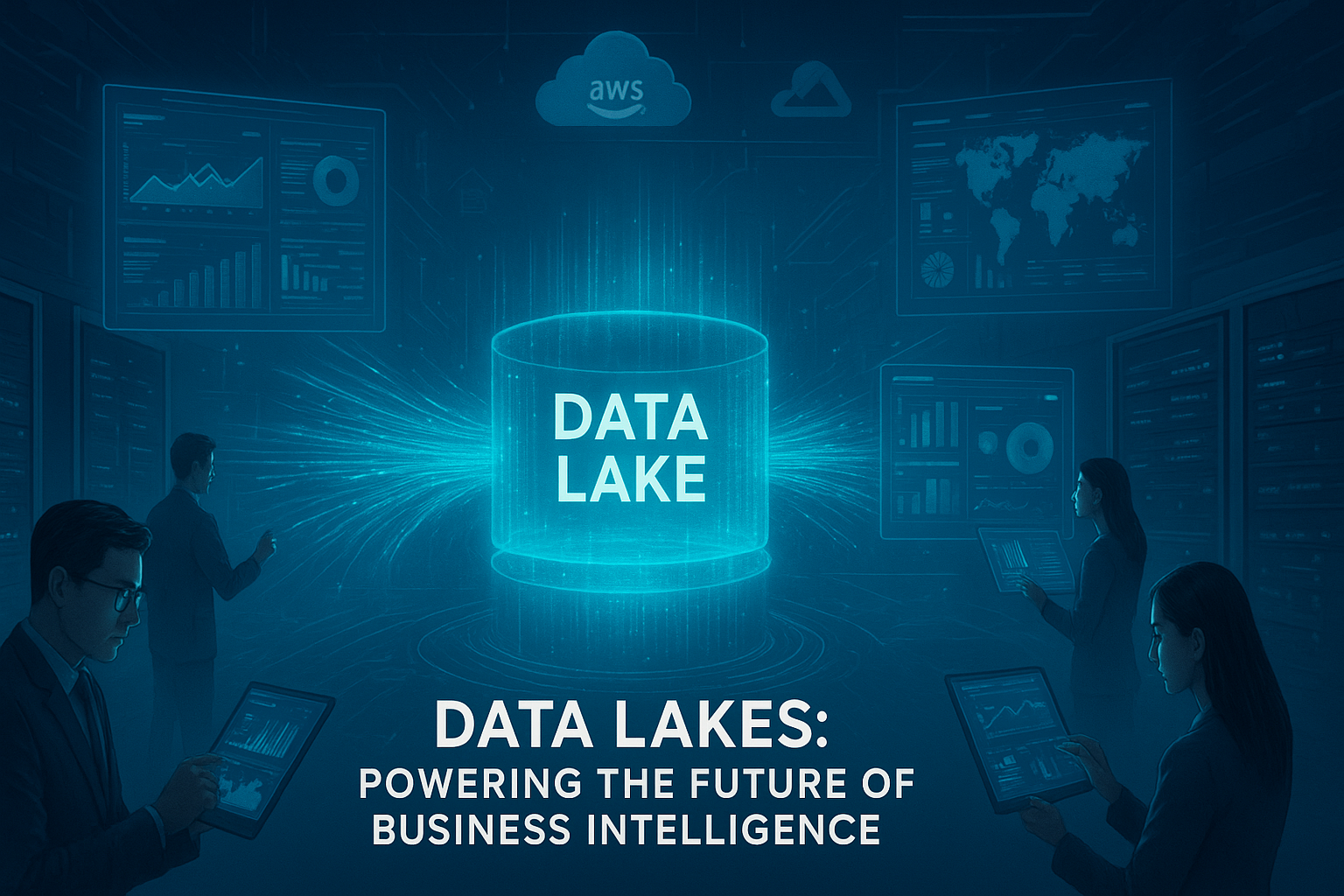What Is the Role of a Data Lake in Modern Business Intelligence?
Today’s business intelligence (BI) is based on something more than reports and dashboards. It requires scalable, real-time access to multiple types of data—structured, semi-structured, and unstructured. Enter data lakes.

As BI goes beyond analytics, data lakes offer the agile platform required for greater insights, AI, and cross-functional interaction.
-
A data lake is a centralized repository to hold raw data in its original form.
-
It varies from a data warehouse that holds structured, filtered data.
-
Data lakes are instrumental in contemporary BI by facilitating real-time, elastic analytics.
-
They accommodate advanced analytics, ML, and unstructured data—making them perfect for today’s changing BI demands.
What Is a Data Lake? (And How Does It Differ from a Warehouse?)
A data lake is an entity or store for housing massive amounts of raw, unprocessed data in forms such as structured (SQL), semi-structured (JSON), and unstructured (images, video, text).
|
Feature |
Data Lake |
Data Warehouse |
|
Data Type |
Raw, all formats |
Structured/tabular |
|
Schema |
Schema-on-read |
Schema-on-write |
|
Users |
Data scientists, engineers |
BI analysts, business users |
|
Cost |
Lower (object storage) |
Higher (compute & licensing) |
What’s the main difference between a data lake and a data warehouse?
A data lake is built for scalability and flexibility; a warehouse is tuned for performance and structure.
🧠Why BI Requires a Data Lake in 2025 and Beyond
Business intelligence is no longer rearview reporting. Today’s BI requires real-time, predictive, and prescriptive insights—fueled by varied datasets.
Key Advantages of Data Lakes for BI:
-
Unified Storage: Ingest marketing, sales, sensor, and external data.
-
Scalability: Petabyte-scale storage on platforms such as AWS S3, Azure Data Lake, or Google Cloud Storage.
-
Advanced Analytics: Supports AI/ML model training and real-time BI dashboards.
-
Cost Efficiency: Less expensive storage than data warehouses.
Considering upgrading your BI infrastructure?
See our Data Lake Implementation Services to future-proof your data strategy.
Powering BI Use Cases with Data Lakes
1. Data Preparation for BI Dashboards
-
Ingest raw CRM, ERP, IoT data
-
Clean, enrich, and structure using ELT/ETL tools such as Apache Spark or dbt
2. Machine Learning & Predictive BI
-
Train models directly from the lake using Databricks or SageMaker
-
Feed insights back into BI tools (e.g., Power BI, Tableau)
3. Data Governance & Compliance
-
Use metadata tagging and cataloging (through Apache Atlas and AWS Glue)
-
Ensure auditability, access control, and retention policies
Can business intelligence be done without a data lake?
Yes, but it restricts scalability and access to unstructured or real-time data.
🏗️ Integrating a Data Lake into Your BI Stack
Core Components:
-
Storage Layer: Amazon S3, Azure Data Lake Gen2, GCP Cloud Storage
-
Processing Layer: Apache Spark, Flink, Presto
-
Orchestration: Airflow, dbt, Dagster
-
BI Layer: Tableau, Looker, Power BI
Best Practices:
-
Begin small with a defined business use case
-
Prioritize metadata, data quality, and lineage up front
-
Tie data lake governance to BI compliance requirements
Ready to revolutionize your BI capabilities using data lakes?
Discover our Complete Guide to Data Lake & Business Intelligence or book a free discussion with our data architects today.
❓ Frequently Asked Questions
Q1. What is the function of a data lake for BI?
A data lake supports flexible storage and access to all data types, enabling scalable BI and advanced analytics.
Q2. Do you really need a data warehouse if you have a data lake?
Many contemporary architectures employ both—a data lakehouse—to achieve scalability and performance.
Q3. Can small businesses make use of a data lake?
Yes. Startups too can create cost-effective data lakes for analytics using cloud-native tools.
Q4. What are used to link data lakes to BI platforms?
Presto, Trino, Athena, and Spark are typically used to query data lakes from BI tools.
Q5. How secure is a cloud-based data lake?
Cloud providers mostly provide encryption, IAM, and data governance tools to provide enterprise-grade security.
![]()





